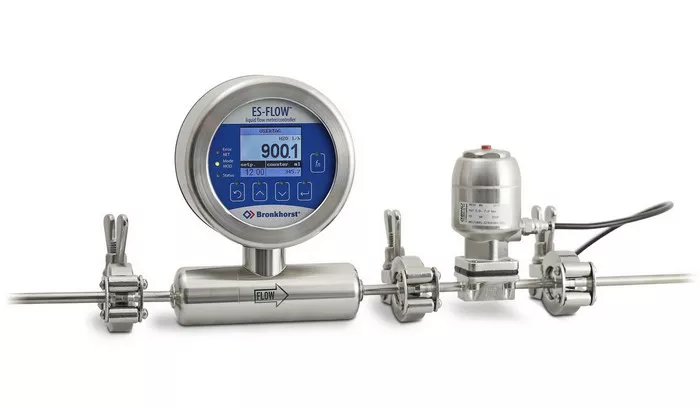An oxygen flow meter is a crucial device in medical, industrial, and scientific applications. It is designed to measure and regulate the flow rate of oxygen from a source to a user or process. Whether in hospitals for patient care, in welding operations, or laboratory setups, oxygen flow meters ensure a controlled and accurate supply of oxygen. Understanding how an oxygen flow meter works and its various types is essential for proper operation and safety.
What is an Oxygen Flow Meter?
An oxygen flow meter is a device that measures and controls the flow rate of oxygen gas delivered to a user or process. It provides real-time readings of the gas flow, ensuring precise administration in medical treatments or industrial processes. The flow rate is typically measured in liters per minute (LPM) or standard cubic feet per hour (SCFH), depending on the application.
These flow meters are commonly used in hospitals to regulate the amount of oxygen delivered to patients through nasal cannulas or masks. In industrial settings, oxygen flow meters are utilized in processes such as metal cutting, welding, and combustion control.
How Does an Oxygen Flow Meter Work
The working principle of an oxygen flow meter depends on its type. However, the general concept involves controlling and measuring the movement of oxygen gas through a system. The device ensures that the required amount of oxygen is supplied by adjusting the flow using a control knob, valve, or automated system.
The essential components of an oxygen flow meter include:
Inlet Connection: The entry point for oxygen gas from the cylinder or pipeline.
Flow Control Valve: Regulates the amount of oxygen passing through the system.
Flow Measuring Mechanism: Determines the rate at which oxygen flows.
Display or Scale: Indicates the flow rate of oxygen in real-time.
Outlet Connection: Where the oxygen exits the meter and is delivered to the user or process.
Depending on the type of flow meter, the measurement and regulation of oxygen flow can be achieved using different principles such as differential pressure, floating ball indicators, or electronic sensors.
Types of Oxygen Flow Meters
Several types of oxygen flow meters are used across various industries. The most common types include:
1. Rotameter (Variable Area Flow Meter)
A rotameter is one of the most widely used oxygen flow meters, especially in medical applications. It consists of a vertically tapered tube with a floating ball or bob inside. When oxygen flows through the tube, the ball rises until the force of gravity and the gas flow reach equilibrium. The height of the floating ball indicates the flow rate, which can be read on a scale printed on the tube.
2. Thorpe Tube Flow Meter
This type of flow meter is similar to a rotameter but operates under a pressurized system. The Thorpe tube flow meter uses a float inside a vertically aligned, calibrated tube to indicate the flow rate. It provides accurate readings and is commonly found in hospitals and oxygen therapy equipment.
3. Mass Flow Meter
A mass flow meter measures the actual mass of oxygen passing through the system rather than volume. It uses thermal or Coriolis principles to provide highly precise measurements. Mass flow meters are often used in laboratory environments, research applications, and high-precision industrial processes.
4. Electronic Flow Meters
Electronic oxygen flow meters use digital sensors to measure and control the oxygen flow rate. They provide real-time digital readings and can be integrated into automated systems for precise control. These meters are used in advanced medical equipment and industrial automation.
5. Pressure-Based Flow Meters
These meters use differential pressure to measure the oxygen flow rate. They rely on the pressure drop across an orifice or a venturi to determine the flow rate. These are commonly used in industrial gas distribution systems.
Applications of Oxygen Flow Meters
Oxygen flow meters play a critical role in various fields. Some of their primary applications include:
1. Medical Applications
- Used in hospitals and clinics to regulate oxygen therapy for patients with respiratory conditions.
- Installed in ventilators, anesthesia machines, and oxygen concentrators.
- Helps ensure safe and effective oxygen delivery to patients.
2. Industrial Uses
- Applied in welding and metal cutting operations where oxygen is required for combustion.
- Used in chemical processing plants for oxidation reactions.
- Found in wastewater treatment facilities where oxygen is used to break down organic matter.
3. Aerospace and Aviation
- Oxygen flow meters are used in aircraft oxygen supply systems for pilots and passengers.
- Essential for astronauts in space missions where precise oxygen control is necessary.
4. Laboratory and Research Applications
- Used in scientific research where controlled oxygen flow is required.
- Important in microbiology and biochemistry labs for cell culture and fermentation processes.
Maintenance and Safety Considerations
To ensure proper functioning and longevity, oxygen flow meters require regular maintenance. Key maintenance and safety measures include:
Regular Calibration: Ensures accurate readings and reliable performance.
Cleaning and Inspection: Prevents blockages and contamination.
Avoiding Oil and Grease Exposure: Oxygen can react violently with oils and greases, leading to fire hazards.
Using Correct Flow Rates: Prevents damage to equipment and ensures safe operation.
Checking for Leaks: Ensures no oxygen wastage and prevents potential hazards.
Conclusion
An oxygen flow meter is an essential device for controlling and measuring the flow of oxygen in various applications. Understanding its working principles, types, and applications helps in selecting the right type for specific needs. Proper maintenance and safety precautions ensure the longevity and efficiency of these devices. Whether in medical settings, industrial processes, or scientific research, oxygen flow meters contribute to precision and safety in oxygen distribution.

